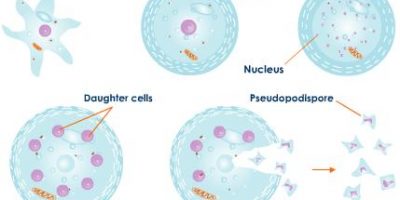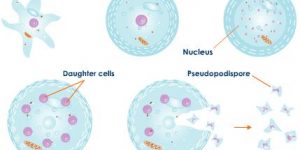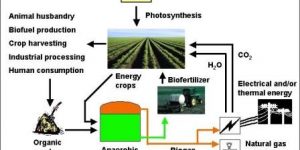REGENERATION
The ability of an organism to regenerate its lost body parts is called regeneration. When a part of the body of an organism gets damaged or crushed, a new identical part starts to develop from the point of damage some time after. Thus, all newly formed portions grow into fully functional organs or body parts lost […]
Vegetative Propagation
The formation of a new plant from stem, root or leaf is known as Vegetative Propagation. This procedure of regeneration is often seen among higher plants. Examples: (i) Germination of onion bulb (ii) Germination of potato tuber stem.
LAYERING
In layering, a branch of stem of a plant is bent downwards facing the soil in such a away that half of the branch gets buried in the soil while the tip remains exposed outside the soil. The half covered in soil evolves into roots. After separating from the mother plant, this part of the branch […]
CUTTING
In cutting, a piece of root, stem, leaf or a bud is set in the soil to grow and become a new plant. This piece of plant then grows descending roots and aerial organs that appear in the external environment. This procedure is beneficial for large scale production which is cost reducing, valuable and worthwhile.
BUDDING
Budding is found in both unicellular as well as multicellular organisms. In unicellular organisms, because of the arrangement of nucleus and cytoplasm within single-celled organisms, some parts of the body bulge out as a bud at any point and grow into a complete organism. This organism acts freely after disconnecting from the mother cell. Occasionally, […]
Fission and Its Types : Binary Fission and Multiple Fission

Fission takes place in single celled organisms. It is further divided into two types binary fission and multiple fission. 1- BINARY FISSION In binary fission two single celled organisms are produced through mitotic division. In this process, the nucleus and cytoplasm are divided as well, which results in two single celled organisms that are identical […]
Bleaching Powder
Bleaching powder is a white solid powder containing a mixture of calcium hydroxide, calcium chlorate (I) and calcium chloride. It is manufactured by Hasenclever method on a huge quantity by passing the chlorine gas over a solution of calcium hydroxide.
CEMENT
Cement is a soft, smooth substance usually present in powder form. It is composed of different elements that are found naturally such as limestone, clay and sand. When combined with water, it binds sand and gravel into a hard solid mass known as concrete. Joseph Aspidin of England discovers it in 1824.The original name of […]
What is Grafting?
Grafting involves joining together of two parts from different plants. These parts come in close contact, join mutually and grow as a one plant afterwards. Some part of a fully grown or developed plant is attached to a part of a young plant. This results in an early flowering in the latter. Part of plant […]
Plaster of Paris
The chemical name of Plaster of Paris is Calcium Sulphate Hemihydrate. Since it is formed by using Gypsum (colorless minerals) which is mostly found in Paris that is why it is called Plaster of Paris. Representation of a substance plaster of Paris using symbols is CaSO4.1/2 H2O while its chemical formula is written as (CaSO4)2.H2O.


